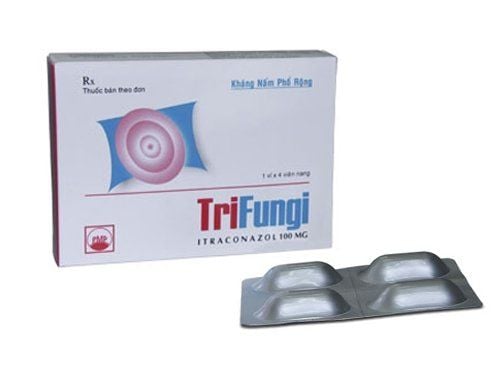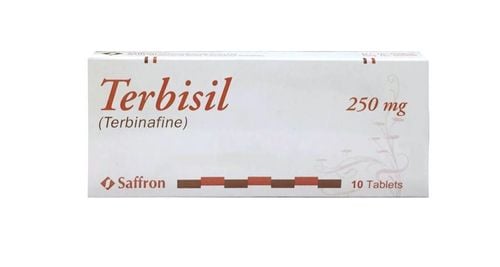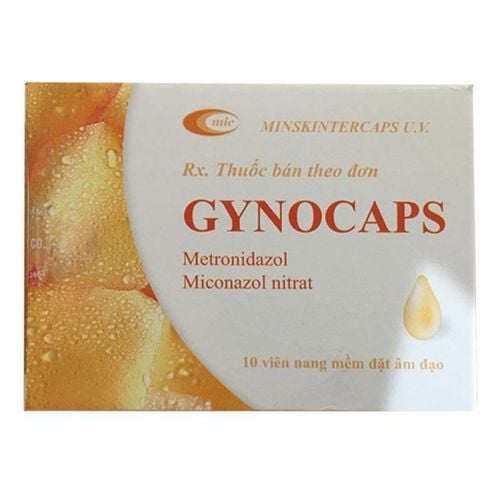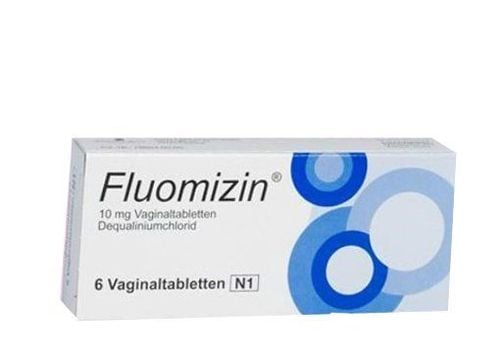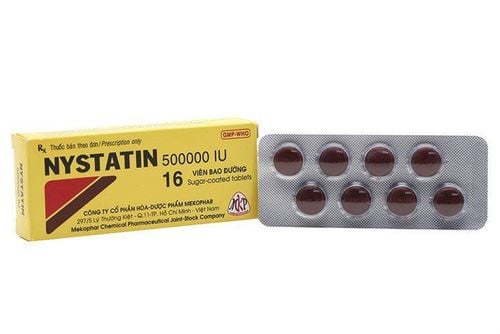This is an automatically translated article.
Celtonal is used in the treatment of systemic fungal infections caused by Candida, Coccidioides immitis, Paracoccidioides and Histoplasma, or chronic gastrointestinal, vaginal, and nail fungus infections that do not respond to other methods. other treatments. Before using Celtonal, you should consult a pharmacist or specialist for safe and effective use of the drug.1. What is Celtonal?
Celtonal belongs to the group of drugs for the treatment of dermatological diseases, made in the form of tablets, packing box of 10 blisters x 10 tablets. The main ingredient Ketoconazole (200mg) in Celtonal is a broad-spectrum antifungal agent that is active against a wide range of pathogenic fungi, including superficial and mucosal fungi, as well as visceral fungi. In addition, Ketoconazole is also active against some gram-positive bacteria.
Mechanism of action:
Ketoconazole and Azol antifungals have the ability to inhibit alfa demethylase (an enzyme involved in the synthesis of ergosterol). Therefore, the active ingredient Ketoconazole blocks the synthesis of ergosterol and lipids of the fungal cell membranes. Thereby changing the permeability of the cell membrane, inhibiting membrane function and growth of fungi. Low doses of Ketoconazole have a fungicidal effect, while high doses kill the fungus. Pharmacodynamics:
Ketoconazole tablets are a synthetic dioxolane imidazole derivative, which has a fungicidal or fungicidal effect against ringworm, yeast such as Candida, Cryptococcus, pityrosporum, Torulopsis and other fungi or eumycetes. Less susceptible to ketoconazole are strains of Aspergillus, Sporothrix schenckii, some Dematiaceae, strains of Mucor and other phycomycetes with the exception of Entomophthorales. Ketoconazole inhibits ergosterol biosynthesis in fungi and alters other lipid components in fungal cell membranes. To date, no development of drug resistance has been observed during treatment with Ketoconazole. Pharmacokinetics:
Absorption: Mean peak plasma concentrations of Ketoconazole tablets of approximately 3.5 mcg/ml are achieved within 1-2 hours after a 200 mg dose taken with a meal. Ketoconazole plasma elimination is then biphasic with a half-life of 2 hours during the first 10 hours and 8 hours afterwards. After absorption from the gastrointestinal tract, Ketoconazole is converted to several inactive metabolites. Distribution: In vitro, the plasma protein binding of Ketoconazole is approximately 99%, mainly to albumin. Only a negligible proportion of Ketoconazole enters the cerebrospinal fluid. Ketoconazole is a weakly alkaline drug that requires an acidic environment for dissolution and absorption. Metabolism: The major routes of metabolism of Ketoconazole are known to be oxidative degradation of the imidazole and piperazine rings, oxidative alkyl reduction and aromatic ring hydroxylation. Elimination: Approximately 13% of a dose of Ketoconazole is excreted in the urine, of which 2-4% is unchanged. The main route of excretion of Ketoconazole is via the biliary tract into the gastrointestinal tract.
2. What diseases does Celtonal cure?
Celtonal drug is used in the treatment of the following medical conditions:
Systemic fungal diseases caused by Candida, Coccidioides immitis, Paracoccidioides and Histoplasma. Severe chronic mucocutaneous candidiasis; Fungi of the digestive tract ; Chronic vaginal candidiasis; Skin or nail fungus that does not respond to other treatments. Prevention of fungal infections in humans with reduced immune response.
3. Dosage - How to take Celtonal
How to take Celtonal:
Take Celtonal with meals. Dosage of Celtonal:
Use the dose of Celtonal 200mg/day, which can be increased to 400mg/day if no response is achieved after 14 days of treatment. Treatment of chronic vaginal candidiasis: Use a dose of Celtonal 400mg x 1 time/day x 5 days. Children 1 - 4 years old: Use a dose of Celtonal 50mg. Children 5 - 12 years old: Use a dose of Celtonal 100 mg. Contraindications:
Do not use Celtonal in people with hypersensitivity to Ketoconazole or Azol group, liver disease, pregnant women. Contraindications Celtonal are understood to be absolute. This means that for whatever reason the contraindication is not flexible to taking Celtonal.
4. Interactions with other drugs
Concomitant use of Celtonal with the following drugs may cause interactions, increase effects or affect the effectiveness of treatment:
Antacids;
Anticholinergic drugs; H2 inhibitors; Cyclosporin drug ; Drugs Rifampicin; Coumarin drug. To avoid unwanted interactions when using Celtonal, patients should inform their doctor or pharmacist of all medicines, supplements, vitamins and herbs... they are taking to be prescribed. Fit.
5. Side effects of Celtonal
During the use of Celtonal, patients may experience side effects such as:
Temporary increase in liver enzymes. Hepatitis; Digestive disorders; itchy rash; Headaches; Dizzy; Thrombocytopenia ; Male gynecomastia. How to handle: When experiencing side effects of Celtonal, you need to stop using it and notify your doctor or ask your loved ones to take you to the nearest medical facility for timely treatment.
6. Precautions when using Celtonal
Liver function tests should be performed prior to treatment with Celtonal. Store Celtonal at a temperature of 15-30 degrees Celsius, out of reach of children The basic information about Celtonal in the above article is for reference only. Because Celtonal is a prescription drug, patients should not use it on their own, but need to contact a doctor or a qualified person directly to have a suitable prescription to ensure safety for health.




